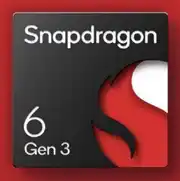Qualcomm Snapdragon 7 Gen 1

Qualcomm Snapdragon 7 Gen 1: A Balance of Power and Efficiency in 2025
Overview of a Mid-Range Smartphone Processor
Introduction
In the world of mobile technology in 2025, the Qualcomm Snapdragon 7 Gen 1 remains a popular choice for smartphones priced between $400 and $600. This chip combines modern technologies, energy efficiency, and sufficient performance for most tasks. In this article, we will explore why it is relevant, how it works, and who it is suitable for.
1. Architecture and Process Technology: The Foundation of Stability
Cores and Frequencies
The Snapdragon 7 Gen 1 is built on an 8-core architecture with a hybrid structure:
- 1x Cortex-A710 (2400 MHz) — a high-performance core for peak loads.
- 3x Cortex-A710 (2200 MHz) — auxiliary cores for multitasking.
- 4x Cortex-A510 (1800 MHz) — energy-efficient cores for background processes.
This configuration allows for flexible resource allocation; for example, when launching a game, all A710 cores are engaged, while only the A510 cores are used when listening to music.
4 nm Process Technology
The use of Samsung's 4-nanometer process technology has reduced power consumption (TDP — 5 W) and improved heat dissipation. This is critical for compact devices where there is no space for large cooling systems.
Adreno 644 GPU
The Adreno 644 graphics processor supports Vulkan 1.3 and OpenGL ES 3.2 APIs, ensuring smooth operation in games with resolutions up to 1080p. It is also optimized for rendering HDR content and VR applications.
Cache Memory
The L2 cache size is 3 MB. This is sufficient to accelerate the processing of frequently used data, but compared to flagship models (for instance, Snapdragon 8 Gen 3 with 8 MB L3), there is a noticeable difference in complex scenarios such as streaming in 8K.
2. Performance in Real Tasks
Gaming
Snapdragon 7 Gen 1 handles most mobile games of 2025 at medium settings:
- Genshin Impact — 45-50 FPS (1080p, medium graphics).
- Call of Duty: Mobile — 60 FPS (maximum settings).
- Asphalt 9 — stable 60 FPS without drops.
However, in games with ray tracing (like PUBG Mobile with RTX), the frame rate drops to 30-35 FPS. For comfortable gaming, it is better to use external coolers.
Multimedia
The chip supports displays with a refresh rate of 144 Hz and a resolution of 2K. When playing 4K/60fps videos, the processor hardly heats up and power consumption remains in the range of 2-3 W. HDR10+ and Dolby Vision formats reveal the potential of OLED screens.
AI Applications
The 6-core AI engine Hexagon speeds up tasks such as:
- Photo processing (noise reduction, detail enhancement).
- Speech recognition (Google Assistant, voice input).
- The "cinematic effect" mode in video recording (real-time background blur).
For example, the Adobe Lightroom Mobile app processes RAW images 20% faster than on the Snapdragon 778G.
Power Consumption and Heat Management
Thanks to a TDP of 5 W, smartphones with this chip demonstrate 7-9 hours of active usage (gaming, video shooting). In power-saving mode, the working time increases to 1.5-2 days.
The thermal package depends on the manufacturer: in devices with vapor chambers (like the Xiaomi Civi 4), the temperature does not exceed 42°C even under load, while in thin models (like the vivo V30), heating may reach up to 48°C.
3. Built-in Modules: The Connectivity of the Future
Snapdragon X62 5G Modem
- Download speeds: up to 4.4 Gbps (mmWave) and 2.9 Gbps (Sub-6).
- Support for 5G SA/NSA, VoNR (voice calls via 5G).
Wi-Fi 6E and Bluetooth 5.3
- Wireless connectivity up to 3.6 Gbps (160 MHz channel).
- Low latency in gaming (less than 20 ms) and support for two Bluetooth devices simultaneously (e.g., headphones and smartwatches).
Navigation Systems
The chip works with GPS, GLONASS, Galileo, BeiDou, and QZSS. Positioning accuracy is up to 1 meter in urban environments.
4. Comparison with Competitors
Snapdragon 7 Gen 1 vs MediaTek Dimensity 8300
- In the AnTuTu 10 test, the Dimensity 8300 scores around ~620,000 points compared to 583,543 for the Snapdragon.
- However, MediaTek is less stable under prolonged load: after 30 minutes of playing Genshin Impact, the frame rate drops by 15%.
Snapdragon 7 Gen 1 vs Previous Generation (Snapdragon 778G)
- The increase in multi-core performance (Geekbench 6) is 32% (2786 vs 2100).
- Energy efficiency has improved by 25% due to the transition to 4 nm.
Apple A16 Bionic
- In single-core performance (Geekbench 6), the A16 leads (1280 vs 969).
- However, Snapdragon wins in multi-threaded performance (2786 vs 2450) and compatibility with the Android ecosystem.
5. Use Case Scenarios
Gaming
The chip is suitable for casual games and esports projects (like Mobile Legends). For AAA titles with ultra-settings, flagship SoCs are a better choice.
Everyday Tasks
Social media, streaming, and working with office applications can be done smoothly without lags.
Photos and Videos
- Support for cameras up to 200 MP (with interpolation).
- Recording 4K/60fps with EIS and HDR10.
- The "night mode" processes shots in 1-2 seconds.
6. Pros and Cons
Advantages:
- Optimal price-performance ratio.
- Support for modern connectivity standards (5G, Wi-Fi 6E).
- Energy efficiency for extended battery life.
Disadvantages:
- Limitations in resource-intensive games and applications.
- Lack of hardware ray tracing in the GPU.
7. Tips for Choosing a Smartphone
- Cooling. Look for models with graphite plates or liquid cooling (like Realme GT Neo 5).
- Battery. Ideally, 4500-5000 mAh with support for charging of 65 W and above.
- Display. AMOLED or OLED with a refresh rate of 90-120 Hz for smooth animations.
Devices with the Snapdragon 7 Gen 1 are more frequently found in the "premium mid-range" segment: Xiaomi Civi 4 ($499), OPPO Reno 10 ($549), Motorola Edge 40 Neo ($469).
8. Final Conclusion: Who Is Snapdragon 7 Gen 1 Suitable For?
This processor is the ideal choice for:
- Users who value battery life. Smartphones can last 1.5-2 days without recharging.
- Photo and video enthusiasts. Cameras with AI enhancement and stabilization support.
- Casual gamers. Most games run smoothly at medium settings.
The main benefits: modern communication technologies, a balance of power and energy efficiency, and an accessible price. If you're not ready to pay $800 or more for a flagship but want a device "without compromises," the Snapdragon 7 Gen 1 is your option.
Basic
3x 2.36 GHz – Cortex-A710
4x 1.8 GHz – Cortex-A510
GPU Specifications
Connectivity
Memory Specifications
Miscellaneous
Benchmarks
Phones with Snapdragon 7 Gen 1
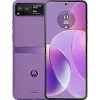
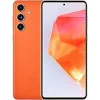
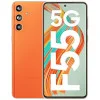
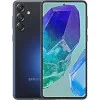


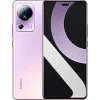
Tablets with Snapdragon 7 Gen 1
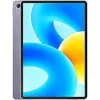
Comparison of Devices with Snapdragon 7 Gen 1
Compared to Other SoC
Related SoC Comparisons
Share in social media
Or Link To Us
<a href="https://cputronic.com/en/soc/qualcomm-snapdragon-7-gen-1" target="_blank">Qualcomm Snapdragon 7 Gen 1</a>


